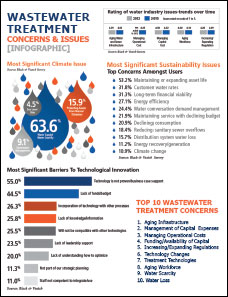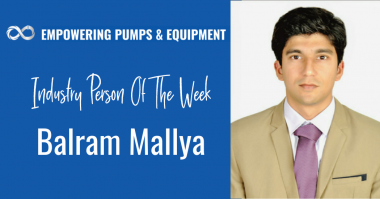Wastewater Utility Regulatory Compliance
When a U.S. manufacturer releases treated wastewater to the sewer, they are billed by their local municipality for the collection and treatment of that waste. Cities require manufacturers to follow strict guidelines that define the pre-treatment chemistry, sample verification, volume calculation, and record keeping for released waste. Non-conformance can result in substantial city fines or business disruption. In addition, the Clean Water Act of 1972 and Water Quality Act of 1987 were established to eliminate the release of toxic substances to the environment, and are the primary federal laws regulating water pollution. In enforcing these laws, the EPA can issue administrative orders, and seek civil or criminal penalties against violators for up to $250,000 per day for individuals, or $1,000,000 for organizations.
As a result, industry has trended toward the minimization or recycling of waste in the production process, where possible. Nevertheless, industrial manufacturers generate, treat and release millions of gallons of wastewater each day.
The Clean Water Act (CWA) is the primary federal law in the U.S. governing water pollution. Its objective is to restore and maintain the chemical, physical, and biological integrity of the nation’s waters by preventing pollution, providing assistance to publicly owned wastewater treatment plants (POWTs) for the improvement of wastewater treatment, and maintaining the integrity of wetlands. It is one of the country’s first and most influential modern environmental laws. As with many other major U.S. federal environmental statutes, it is administered by the U.S. Environmental Protection Agency (EPA), in coordination with state governments. (CWA) is the primary federal law in the U.S. governing water pollution. Its objective is to restore and maintain the chemical, physical, and biological integrity of the nation’s waters by preventing pollution, providing assistance to publicly owned wastewater treatment plants (POWTs) for the improvement of wastewater treatment, and maintaining the integrity of wetlands. It is one of the country’s first and most influential modern environmental laws. As with many other major U.S. federal environmental statutes, it is administered by the U.S. Environmental Protection Agency (EPA), in coordination with state governments.
Wastewater Utilities’ Concerns
Wastewater utilities have to consider many variables when adopting new technologies to meet regulations.
Sustainability Issues
Sustainability and resource recovery receive attention by utilities as they consider treatment technology upgrades. Providers are intelligently setting tough standards for holding down implementation costs and maximizing savings. Utilities are approaching new systems with environmental impacts in mind.
Climate Concerns
Extreme climate conditions, aging infrastructure, and social demands on utilities to reduce their environmental impact are combining to test the operational resilience of today’s wastewater treatment facilities. From water-inundated regions in the East to tapped-out areas in the West and Southwest, utilities are under extraordinary pressure to streamline operations, increase efficiency, and reduce costs.
Market Drivers
- Environmental Policy In recent years houses have begun to encroach on both sewage pump stations and treatment plants. Therefore, environmental issues such as overflows and smell are extremely important. Today there is a big push for reducing manufacturers’ carbon footprint. The aim is for a cleaner, safer and more sustainable environment.
- Efficiency Pumps and other equipment must be compliant with energy codes, meet high energy saving requirements, and overall efficiency standards
- Safety Includes environmental and work hazards
- Reliability Equipment must be reliable and not prone to blockage, nuisance breakdowns, and wear. Poor reliability results in higher Opex (Operating Expenditure).
Efficiency is Key
New equipment technologies offer the promise of significant energy savings. A universal concern comes with aging infrastructure, especially in larger cities, where energy inefficiencies drag down the bottom line. Many utilities are confident new technologies can reduce energy costs and deliver more efficient systems, but they either lack the leadership support necessary to adopt and deploy the technology or believe the advancements are too expensive or will not integrate well with existing systems. The result may be a utility that misses opportunities during an already challenging time for wastewater utilities. Source: Julie Gass, Black & Veatch
Technology Barriers
Innovation and new technology are highly valued, and often universally adopted, among water utilities. Newer technologies can be implemented if performance can be demonstrated through pilots or other testing. However, several factors are holding back utilities from fully embracing these advancements: available capital, lack of technical understanding, and a perceived apathy at the upper levels of the organization.
 See the Top 10 Wastewater Treatment Concerns & Issues (download the infographic).
See the Top 10 Wastewater Treatment Concerns & Issues (download the infographic).




